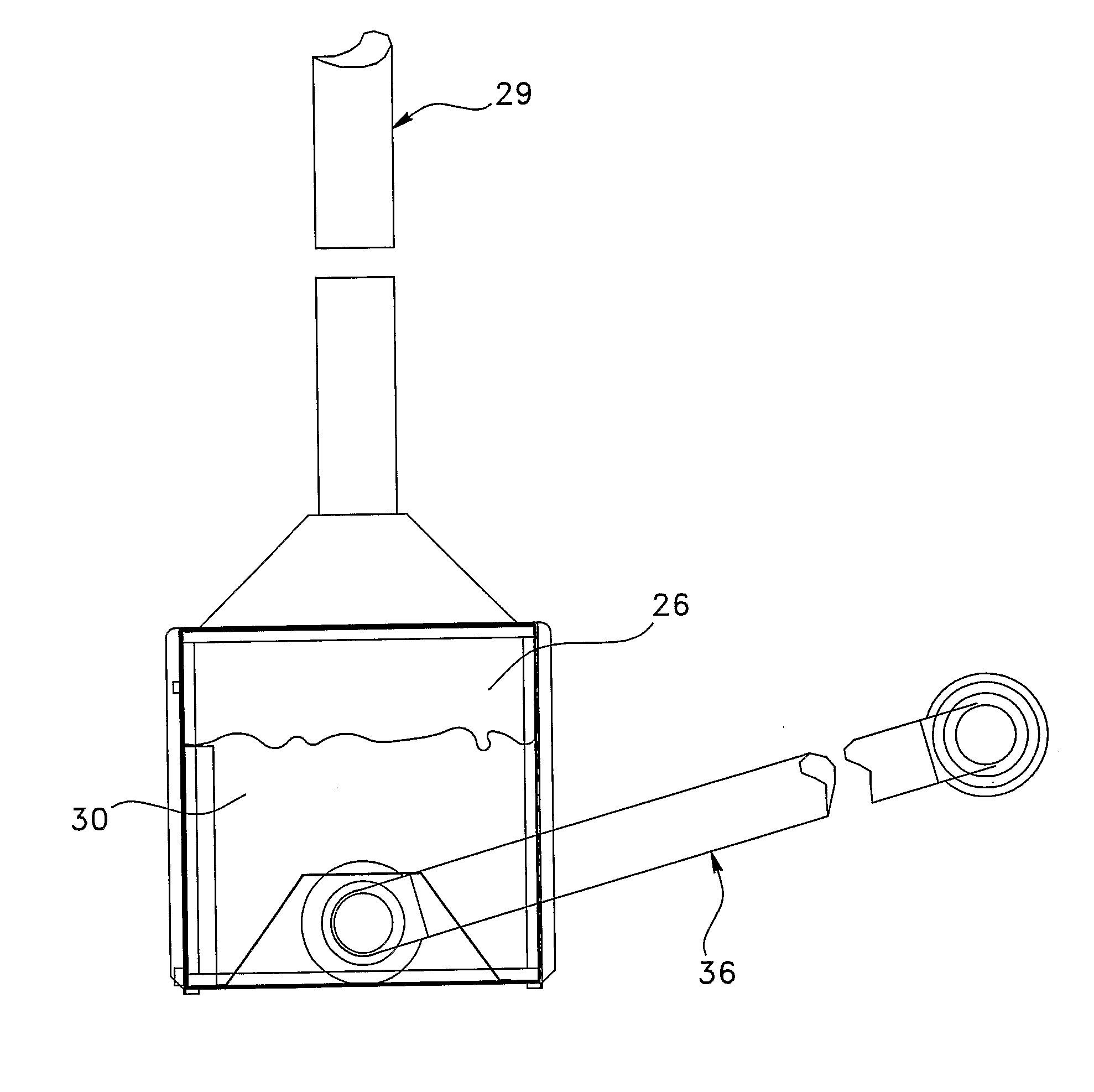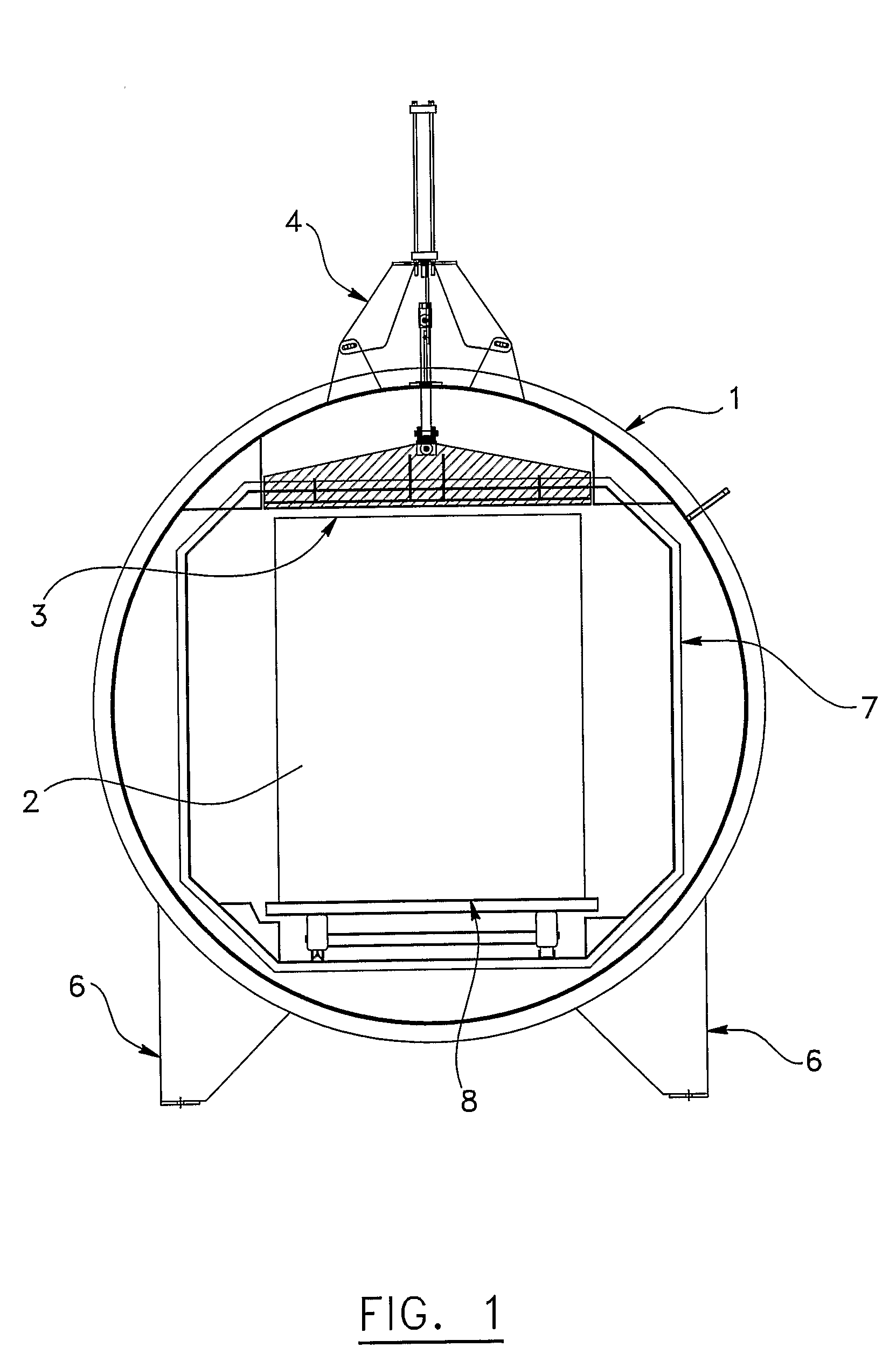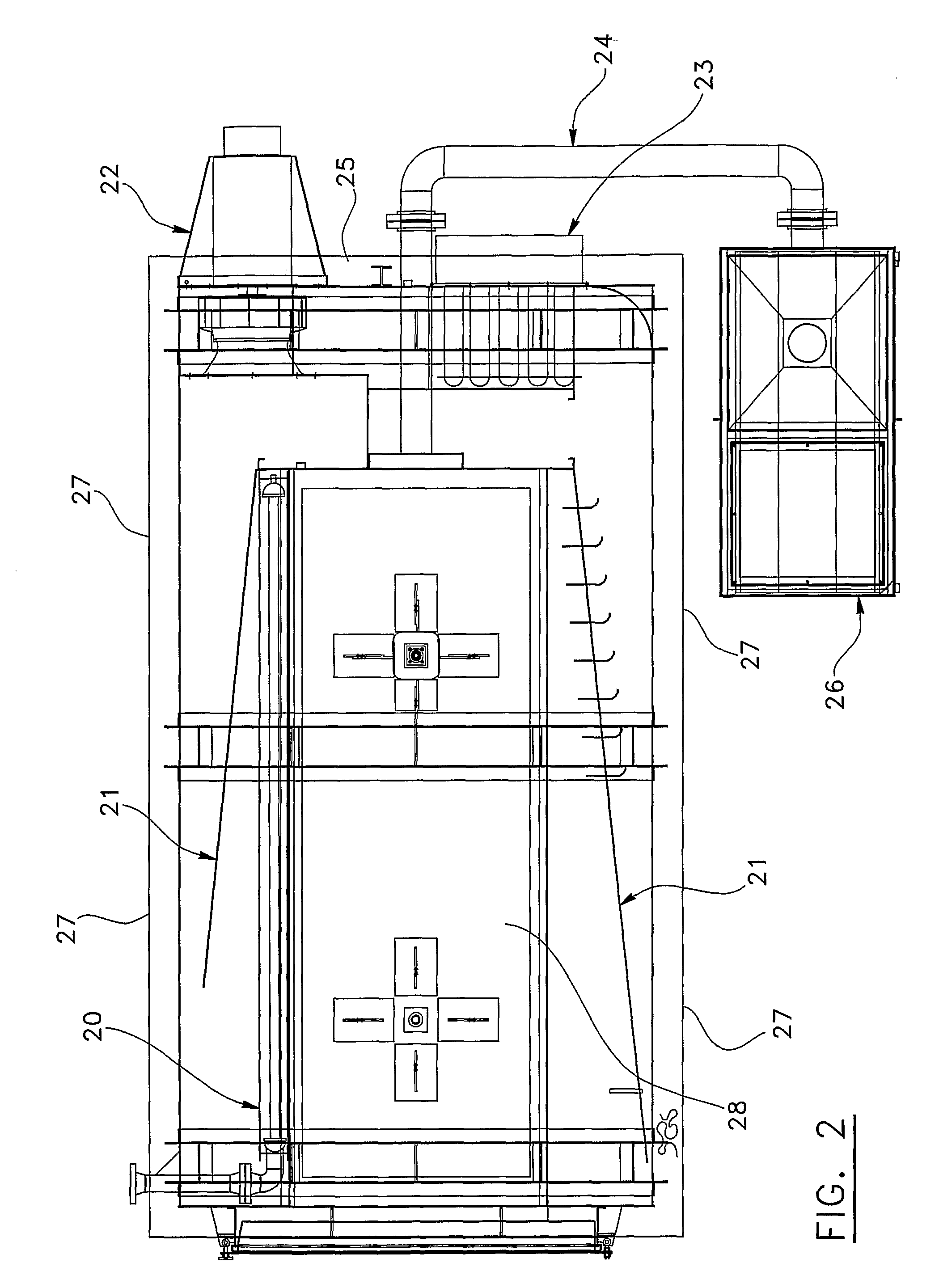Process for treating lignocellulosic material, and apparatus for carrying out the same
a technology of lignocellulosic material and treatment process, which is applied in the direction of lighting and heating apparatus, solid fuels, coatings, etc., can solve the problems of wood stains, many problems still persist, and wood manufacturers stockpiling a variety of unwanted colors
- Summary
- Abstract
- Description
- Claims
- Application Information
AI Technical Summary
Benefits of technology
Problems solved by technology
Method used
Image
Examples
Embodiment Construction
[0034]In the following description, the same numerical references refer to similar elements. The embodiments shown in the figures, and the physical dimensions exemplified herein, are preferred.
[0035]Moreover, although the present invention was primarily designed for use with lignocellulosic material, such wood for example, it may be used with other types of objects and in other fields, as apparent to a person skilled in the art. For this reason, expressions such as “lignocellulosic”, “wood”, etc. used herein should not be taken as to limit the scope of the present invention and includes all other kinds of items with which the present invention could be used and may be useful.
[0036]Moreover, in the context of the present invention, the expressions “machine”, “apparatus”, “device”, and any other equivalent expression known in the art will be used interchangeably. Furthermore, the same applies for any other mutually equivalent expressions, such as “lignocellulosic material” and “wood”,...
PUM
 Login to View More
Login to View More Abstract
Description
Claims
Application Information
 Login to View More
Login to View More - R&D
- Intellectual Property
- Life Sciences
- Materials
- Tech Scout
- Unparalleled Data Quality
- Higher Quality Content
- 60% Fewer Hallucinations
Browse by: Latest US Patents, China's latest patents, Technical Efficacy Thesaurus, Application Domain, Technology Topic, Popular Technical Reports.
© 2025 PatSnap. All rights reserved.Legal|Privacy policy|Modern Slavery Act Transparency Statement|Sitemap|About US| Contact US: help@patsnap.com



